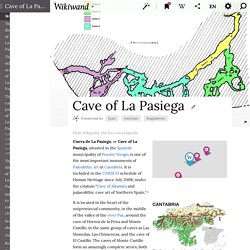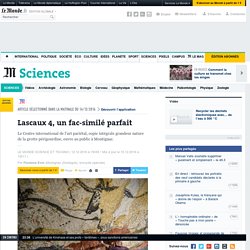

De femme en femme, les vénus des chasseurs préhistoriques ! The Vulva in Stone Age Art. The vulva is well represented in Palaeolithic art.

It is mostly seen as engravings on stone, bone or ivory. The representation is obviously a well known one that has become abstracted to the point where it is often no more than an oval or circle with a single mark at its centre or at its lower edge. Although many examples are from Europe, and from the upper Palaeolithic, it occurs over a broad time range, and a very large area, including not just Europe, but Australia as well.
Vulva, Brno A disk made from a mammoth tooth found in a grave at Brno (Moravia) representing an abstracted vulva composed of a circle and a line. Photo and text: Marshack (1972) The vulva consists of the external genital organs of the female mammal. Definition of the vulva above: Wikipedia Carved and engraved vulval images from the Upper Palaeolithic. Cave of La Pasiega. The cave paintings of La Pasiega On the plan proposed by André Leroi-Gourhan, La Pasiega can be taken as a good example of the "Cave as Sanctuary", or to be more precise as a collection of sanctuaries of different epochs, arranged according to certain models.

In fact this idea developed in the thoughts of the distinguished French prehistorian precisely when he visited the Cantabrian caves, while he was participating in a group of foreign investigators who were excavating in the cave of El Pendo during the 1950s. "I can definitely confirm that the study of the rock art of northern Spain was decisive in the master's ideas, which since then have become famous through his many publications.
It is supposed that there are exceptions to this rule, many variants which depend on regions and epochs, the metaphyical significance of which is not entirely clear in its general outline, but which should be explained in a particular way, also at La Pasiega. Altamira. Cet article ne cite pas suffisamment ses sources (juin 2013).

Si vous disposez d'ouvrages ou d'articles de référence ou si vous connaissez des sites web de qualité traitant du thème abordé ici, merci de compléter l'article en donnant les références utiles à sa vérifiabilité et en les liant à la section « Notes et références » (modifier l'article, comment ajouter mes sources ?). Historique de la découverte et de la reconnaissance d'Altamira Les peintures d'Altamira ont été découvertes en 1879, lors de fouilles conduites par Marcelino Sanz de Sautuola. La grotte était connue depuis 1868 et Sanz de Sautuola y effectuait des visites depuis 1876. Il avait observé la présence de dessins géométriques sur les parois sans y accorder d'importance mais c'est sa fillette Maria, alors âgée de huit ans, qui remarqua la première la présence de «toros» dessinés au plafond.
Historiquement, Altamira est donc le premier ensemble pictural préhistorique important qui ait été découvert et publié. LA COLLECTION DU PREMIER PREHISTORIEN AU MUSEE DE ST GERMAIN EN LAYE. The Implications of the Working Memory Model for the Evolution of Modern Cognition. Les plus enigmatiques peintures rupestres (Petra Furada) documentaire histoire. L'homme préhistorique cet artiste il y a 40 000 ans - documentaire histoire en français. Lascaux 4, un fac-similé parfait.
Le Centre international de l’art pariétal, copie intégrale grandeur nature de la grotte périgourdine, ouvre au public à Montignac.

LE MONDE SCIENCE ET TECHNO | • Mis à jour le | Par Florence Evin (Montignac (Dordogne), envoyée spéciale) L’éblouissement est total. Jeudi 8 décembre à Montignac (Dordogne), au Centre international de l’art pariétal, ou Lascaux 4, dans le fac-similé de la fameuse grotte ornée, même les plus exigeants des experts sont saisis face au grand bœuf sauvage ou aurochs qui accueille l’intrus à l’entrée de la salle des Taureaux, un boyau couvert de peintures sur trente mètres de long. Au pied de l’éboulement (reproduit lui aussi), qui a permis le 8 septembre 1940 à quatre gamins, sur les traces de leur chien Robot qui s’était glissé dans un trou, de découvrir cette « Sixtine de la préhistoire », les yeux de Jean Clottes brillent d’un feu intense.